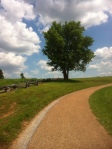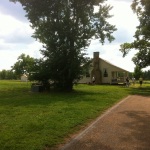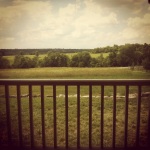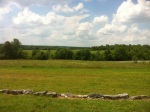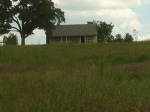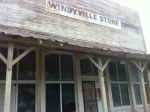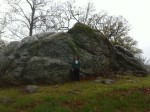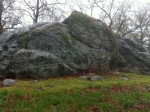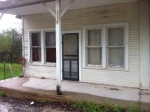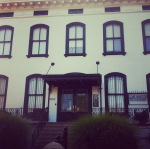You may be wondering just what it is that a ghost hunter (or paranormal investigator, for professionalism’s sake) is really looking for or may accidentally find.
If you’ve ever watched an episode of Ghost Hunters, you probably have a good feel for some paranormal jargon, but here’s a brief intro into some common paranormal terms. Visit The Atlantic Paranormal Society for some more glossary terms, tips, and other information.
Anomaly: Occurrence or condition outside of normal experience. Basically, lots of experiences out in the field can’t be completely understood as fully normal or paranormal. Things like unexplained smells, touches, or feelings while in the field are anomalies.
Apparition: Manifestation of some quasi-physical entity. Though commonly reported, apparitions are tricky to catch on camera. So, capturing one on film is like the Holy Grail of paranormal investigation. But be wary of photos/videos claiming to feature an apparition: due to the relative ease of tampering with video and digital evidence, hoaxes are abundant.
Debunking: Dismissing or explaining a claim, experience, or so-called paranormal event as something normal or at least physically explainable through research.
Entity: Disembodied “consciousness” which may be referred to as a ghost, presence, apparition, or even demon (if obviously resentful or malicious).
EVP (Electronic Voice Phenomenon): Disembodied “voices” or other sounds imprinted on recording equipment. EVPs can be captured on tape recorders, but for less static and clearer sound, a digital recorder is an investigator’s best friend. EVPs are relatively hard to find, and take a lot of patience in order to sift through possibly hours of silence.
Floating Orb: Usually a whitish or even bluish spherical image that appears inexplicably on film or other photographic equipment. Again, be wary of “orb evidence,” as it’s easy for amateurs to mistake things like dust particles or even bugs that happen to show up in photos as orbs, due to exposure and flash. If you find an “orb” in one of your own photos, is it perfectly round, and quite crisp-looking? Congratulations, you probably caught a dust speck on film, or maybe even a small bug. If it’s a little uneven, mist-like, or a tad smeary-looking, you may have a legitimate orb.
Haunting: Ghostly presence or manifestation attached to a specific place or person. Hauntings are divided into four basic types–Intelligent, Poltergeist, Residual, and Demonic. (For more explanation of the distinctions between these hauntings, TAPS and ProofParanormal have great information!)
Materialization: A ghost or apparition forming visually. (This is something I haven’t experienced, but would love to!)
Matrixing: Natural human tendency for the mind to “fill in the blanks” or interpret visual, audio, or other sensory information as familiar. Matrixing could be responsible for less-than-stellar paranormal “evidence” like people seeing images of a face or something in a random picture, or for seeing faces (other than their own) in mirrors.
This is by no means an exhaustive list or anything, just some of the terms I personally find interesting. Learning about these terms can help you understand what’s easily misconstrued as paranormal, and help you appreciate the occurrences that may very well be paranormal. As an investigator, the key is to know what is considered good, legitimate evidence, and what is easily debunked.
I encourage you to get out there and dive into the world of paranormal research, even if you just start out surfing the web for famous cases or definitions. Have fun, and happy hunting!
